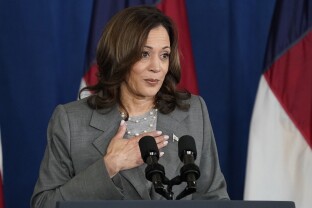Democrats know the youth vote is critical to winning elections this cycle, and Kamala Harris’ campaign is seeing plenty of energy among younger voters.
The problem is, no one is quite sure how much of that enthusiasm will translate on Election Day.
Overall, young voter engagement has increased over the last decade, and young voters were a key factor in Joe Biden’s victory in 2020. (More than half of the people aged 18 to 29 voted in 2020, an 11% increase from 2016, according to data from Tufts University.)
